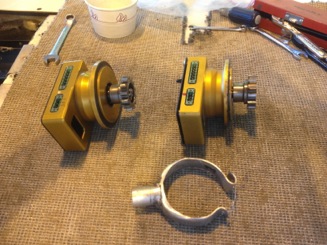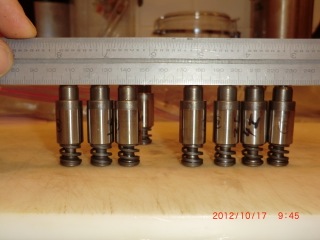Has I discovered the answer?
Today started out thinking about my engine vibration issue while lying in bed. What could be causing it?
I have investigated everything I could think of during the last 2 months searching for an answer to a problem no one but me would notice.
I recalled starting the engine on Sunday and it seemed to have stared running smoothly, then a few moments later I noticed the sound had changed a bit. A sort of popping sound. Very light pop or harshness to the exhaust , but different then what I remember. Hum, this sound be could it be valve related? Recently I was thinking the sound had changed a bit from what I think is normal. Instead of a smooth sound it sounded like it had an exhaust leak or something (of coarse it doesn’t). What if the valves were not properly opening/closing at the proper time? Is it related to the heat up of the oil affecting it somehow?
The only components which would affect compressions (and thus the power pulses) would be a broken ring (doubtful), something particle trapped under a valve seat or a hydraulic lifter. The lifters use oil pressure to expand a tiny hydraulic cylinder which is used to “self adjust” the valve clearances. It is a much better system than I had with my old Lycoming 0-235 where periodically I would have to manual adjust the valves. Theoretically, the valves will never need to be adjusted and always be perfectly set. Think of the old days when you had to get your brakes adjusted on your car and now they are self adjusting.
Todays goals were to
First, remove my PMag electronic ignition and ship it back to the EMag Air for upgrade and testing to rule any possible ignitions issues out of my trouble shooting efforts. Brad will make sure they have the latest software and upgrades done on the PMag while the plane is down. I ordered new wires to replace my spark plug leads and a coil too.

Second was to remove all the lifters and carefully check them out according to the information I found on the web.
It is not hard to remove the lifters and only took a few hours. While cleaning them, I noticed #2 exhaust lifter was very sticky as compared to the others. All the other lifters have a smooth in/out and in rotation action and fit snug but not tightly.

#2 was sticky and tight going in and when rotated felt gritty or when a bearing hangs up when rotated. Strangely #2 cylinder is the same one I replaced due to scoring on the inside cylinder walls. Could it be related or did the lifter decide to score itself in sympathy with the cylinder? Doesn’t matter because the cylinder is gone and this little puppy will be gone too. I finish carefully examining the rest of the lifters and order any new ones I need tomorrow.
I also tested them for a “collapsed” lifter and all was good.

Thinking about it, a bad lifter does make some sort of perverse sense. If it is sticking it could respond to weird stimuli such as pressures or if the oil temperature is hot or cold causing it could hang up and work or not. Sticking would not affect my compression or engine power (to a great extent) but would affect when the valves opens or closes. The popping sound could be the valve opening at the wrong time (too soon or too late) in relation to the other cylinders.
Too bad it will be a while before I can test the plane again. I have to wait for my new lifter, an my ignition upgrade to arrive before I can assemble everything to fly again. Fortunately, both should both arrive about the same time.
While waiting for parts, I plan to start installing my fuel probe system in the plane in preparation for the arrival of the programable fuel gauge. It will be so nice to have an accurate readout on the dash of fuel levels.
After leaving Oshkosh this year and starting my trip, Lee and I flew to Denver together (flight of 2). The first leg ended up being longer than expected due to some bad weather and I started becoming concerned about the fuel level. Naturally some the junk in the back of the seat fell in front of my stbd fuel sight glass. Crap, I could just see the level before it dropped below my stuff. So I timed my tank based on usage to switch to the port side at the last minute and decided on a “gotta land point”. Naturally, everything was fine, but I decided then and there, this is the last trip I’ll fly without dashboard fuel readouts.
The whole reason I invented the probe and worked with Princeton Electronics who developed the electronics was to see the fuel level in MY plane and I don’t have them installed yet. Finally, I’ll have the fuel readouts I have dreamed of for so many years.